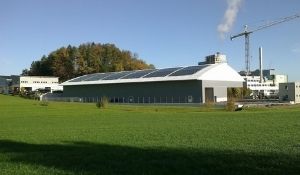Companies’ objectives already require responsible construction

Companies’ environmental and safety systems require that their entire supply chain meets responsibility requirements. If the production facilities of an operator involved in the chain are not at their required level, the operator is at risk of being dismissed. As such, subcontracting operators need to ensure that their own production or storage facilities meet the increasing requirements set for responsible construction.
In recent years, companies committed to responsibility objectives have been paying more attention to the environmental responsibility, work safety and social responsibility of their subcontracting chain and partners.
“Many of the requirements set for environmental and safety systems pertain to the entire production chain. For this reason, companies need to be sure of their partners’ working conditions, the safety of their facilities and the energy consumption of their production facilities. As such, companies steered by their certificates and systems require increasingly strict reporting from their subcontractors and partners regarding their facilities and such. An agreement can only be made if the partner meets the criteria in place,” explains Managing Director
For this reason, an operator planning to procure a fabric structure must be sure that the facilities have been produced and operate responsibly and in accordance with key environmental and quality standards.
A pioneer in responsibility as well
Best-Hall gauges the quality of its production with ISO management system certificates regarding quality, occupational safety and health and environmental responsibility alike.
The company’s fabric structures are made from high-quality European recyclable CE-marked steel and premium fabric. The special anchoring technology used by Best-Hall has been tested and proven safe by the Technical Research Centre of Finland (VTT), facilitating a long lifecycle for the company’s portable buildings. Every building is dimensioned with the local weather conditions and usage stress in mind. Larger Best-Hall buildings are implemented by designers who have achieved the ‘exceptionally difficult’ grade of the national FISE Certification of a Designer of Steel Structures.
“In addition to the responsibility of our buildings, we have been allocating resources to constantly improving the safety of both our employees and our worksites for years. Many companies set strict criteria for their partners, and the most demanding companies have ranked us as one of the best in terms of taking care of work safety,” Tuomela is happy to report.
A calculation for reporting carbon dioxide emissions
In 2018, Best-Hall became the first fabric structure constructor to introduce a calculation model that enables the company to provide its customers with a detailed report on a building’s lifecycle-spanning carbon footprint. To a business commissioning a Best-Hall building, this calculation serves as a document of the emissions generated by the building in the different stages of its lifecycle.
“The business can use the calculation to verify the energy efficiency of its facilities if needed. It also helps customers select optimally energy-efficient materials and heating systems. As a pioneer in fabric structure construction, we want to be on the frontline to help our customers achieve their energy efficiency and environmental objectives.”
As part of determining the environmental impact of its buildings, Best-Hall has also calculated the carbon footprint of its own process. The company has long developed the manufacture of its buildings from the perspective of sustainability: the choice of steel and cladding materials used, the surface treatment of the frames and transport – all choices are made with the minimisation of environmental impacts in mind. When it comes to our main raw materials – steel and fabric – we collaborate with our suppliers to have as much emission-free material as possible.
“We, too, are increasingly being asked for reports on our factory’s energy consumption and responsibility related to the wellbeing and occupational safety of our staff. In fact, many of the buildings we have constructed for pioneering companies would have never come to be were our responsibility aspects not at the same level required by environmental and work safety systems as theirs,” comments Tuomela to illustrate the significance of responsibility.
